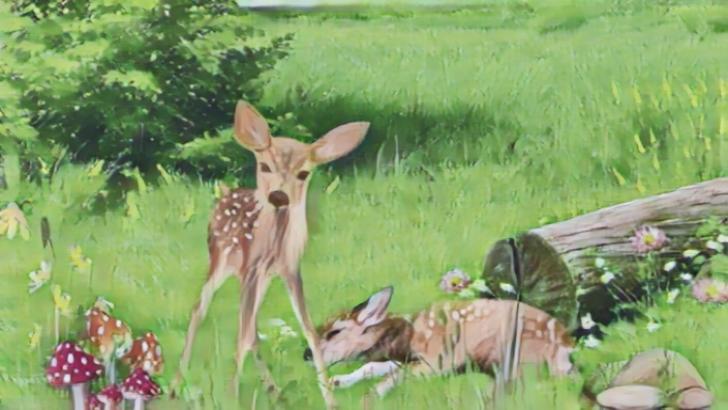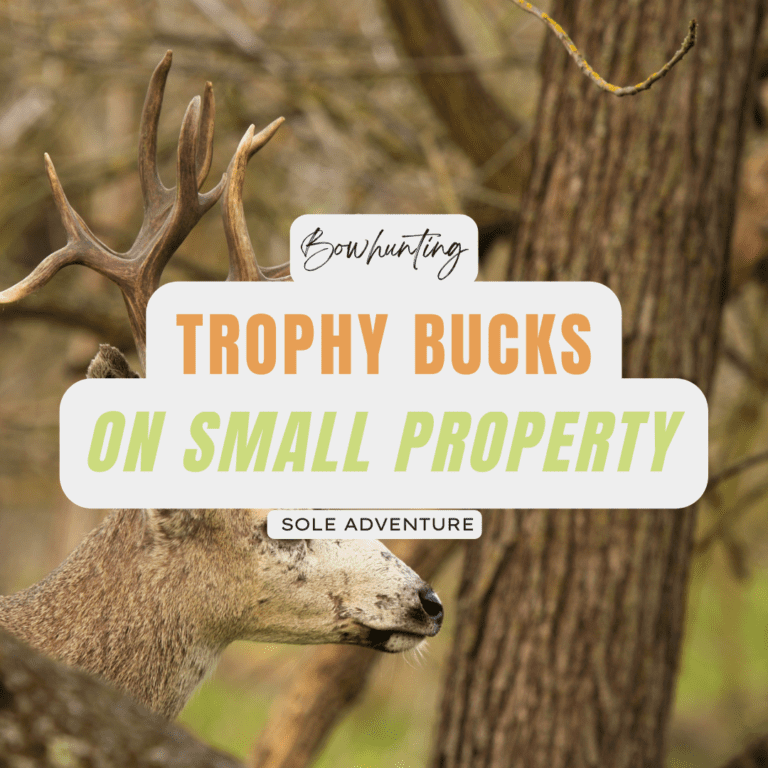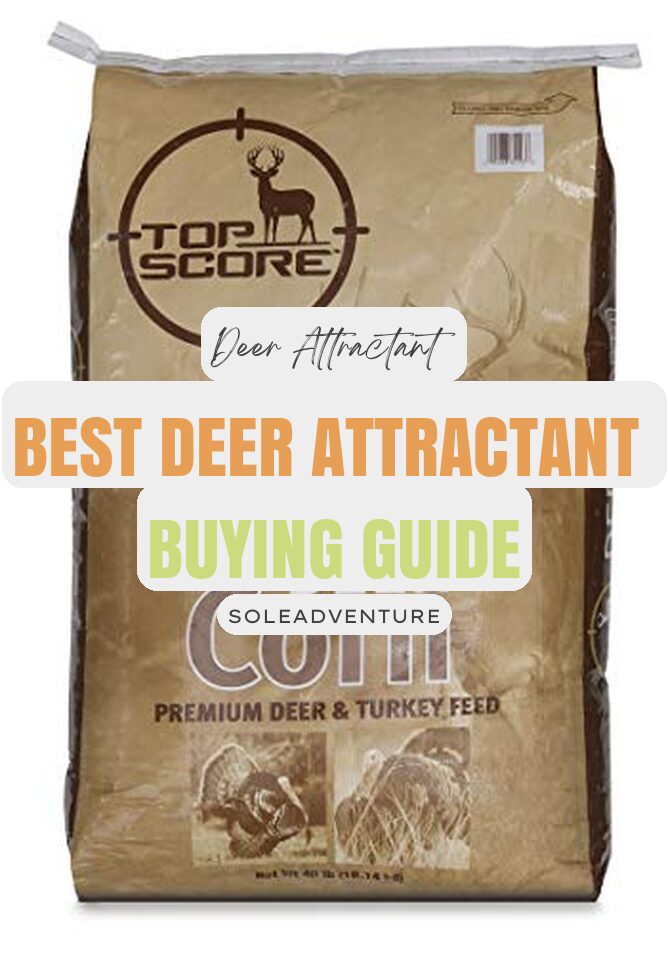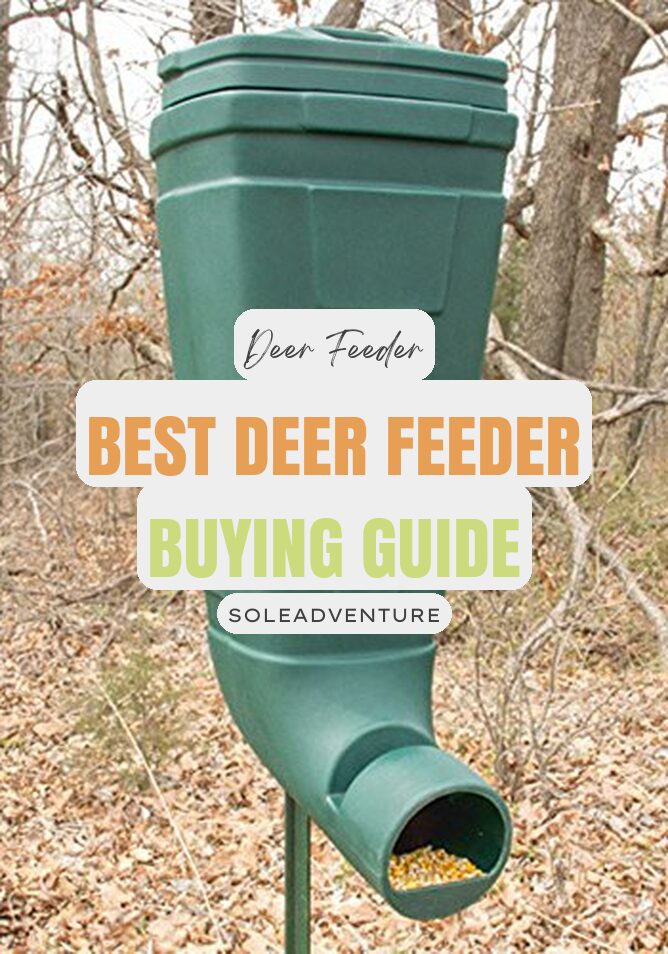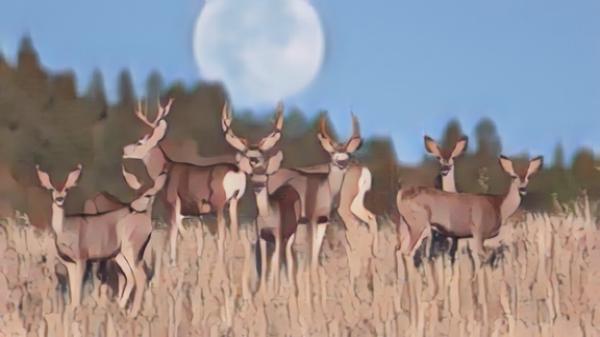If you're an avid deer hunter and spend any time online browsing hunting forums or social media, you've probably come across a photo of a young buck captioned as a "cull" or "management" buck. Unfortunately, many hunters have a skewed definition of what these terms actually mean, often mistaking a perfectly healthy and normal deer for one that requires culling.
Before diving into the specifics of culling and managing bucks for herd improvement, let's first clearly define what these terms actually mean. A cull buck is not simply any young or small buck, but rather refers to a deer that poses a threat to the health and genetics of the herd. On the other hand, a management buck can refer to any deer that a landowner or game manager selectively harvests to maintain optimal herd health. These concepts are more complex than they may seem at first glance.
In this article, we'll take a closer look at the delicate balance required to maintain a healthy deer herd, exploring the pros and cons of culling and managing bucks and providing expert tips for optimizing your hunting strategy. Whether you're an experienced hunter or just getting started, this guide will help you understand the science behind deer herd management and help you make more informed decisions in the field.
Contents
- The Definition of a Cull Buck
- The Meaning of Management Buck
- Do Not Cull These Deer
- Why Using a Buck Tag on a Cull Buck is a Waste
- Take Pride in Your Hunting Achievements
- A Study on the Effectiveness of Culling Bucks
- Why You Shouldn't Believe Everything You See on Hunting TV Shows
- Effective Ways to Increase Your Average Antler Size
The Definition of a Cull Buck
A cull buck refers to a male deer that has antlers that are smaller or less impressive than other deer of the same age group on a particular property or area. It can also pertain to deer whose antlers display an undesirable and abnormal growth, which consequently lowers the herd's antler quality. These inferior bucks are, therefore, intentionally "culled" or harvested to promote the herd’s genetics and enhance the overall quality of the next generation of deer.
Here are important facts to know about cull bucks:
- They are often young, big-bodied deer with antlers that are atypically small or deformed.
- They typically have genetic or physical characteristics that are not desirable.
- Their removal hopes to improve the health and population of the deer herd in a specific area.
- Cull bucks are usually harvested during designated hunting seasons that the state or the property owner establishes.
Ultimately, the practice of identifying and removing cull bucks aims to ensure a more robust and healthier deer population in the hunting community by allowing the herd to reach its maximum potential.
The Meaning of Management Buck
A management buck refers to a buck that is removed from a property by a property manager for a variety of reasons which could vary based on different deer management strategies. This term is similar to "cull buck", although the latter is more specific and is usually reserved for older or genetically inferior bucks that are removed from a deer population.
The term "management buck" is widely-used and can encompass the removal of any male deer under any kind of deer management strategy. Management bucks are desirable if there is an overpopulation of deer, which can damage the environment and cause issues for other wildlife. By using different deer management strategies, skilled property managers can maintain sustainable and healthy ecosystems.

Do Not Cull These Deer
When it comes to buck culling, one needs to be cautious about identifying the deer accurately. It's crucial to understand that the phrase "cull buck" is subjective and varies from place to place. What might be an average or a low-quality buck in one region could be a highly prized trophy in another. Therefore, comparing the buck with the local population is necessary. Instead of relying on random deer pictures online, knowing the local herd and its qualities would help you make informed decisions. Additionally, predicting the growth of the antlers is challenging. Even a small six-pointer can transform into a magnificent ten-pointer, indicating the finite potential of the deer. It is best to avoid culling young bucks as they still have ample opportunities to thrive and become quality deer. Instead, only cull the four-year or above bucks with a small rack. Though, one's ability to recognize age is often misleading, and many hunters find it challenging to determine the age of a deer that is not a fawn. Another common misconception is assuming one or two-year deer are cull bucks. Regardless of their looks and abnormality, they shouldn't be labeled as cull bucks. Even spike yearlings can turn into quality deer as they age, and therefore, having the spikes on your property may not be as bad as it seems.

Why Using a Buck Tag on a Cull Buck is a Waste
If you're a hunter, more than likely, you're trying to manage the deer population on your property. Deer are known to cause significant damage to crops and vegetation, and overpopulation can lead to disease and decrease the overall health of the deer population. That's why most states give out one or two buck tags per year to each hunter.
However, using a buck tag on a cull buck or a subpar deer that doesn't meet the criteria of a healthy or mature buck is a waste of tag. As a properly managed property should have more than enough deer, and using the buck tag on a cull buck won't make a significant impact on the overall health of the herd.
If you have a good buck to doe ratio, there should already be plenty of bucks around. Therefore, it is important to make sure you use your tags wisely, taking a good buck instead of a cull buck to promote healthier herds and maximize your hunting experience.
Buck's Genetics are Irrevocably Spread
The debate over culling an undersized buck breeds more controversy than solution. The fact of the matter is that the buck's genetics are already out there in the wild. During a single year, a buck can breed up to 8 does under normal circumstances. If there is an abundance of bucks in the area, that number can be as low as 2 to 5 does per season. If the decision has been made to eliminate a 3-year-old cull buck because of its inadequate antlers, there is no guarantee of removing his genes from the region permanently.
Removing an average buck still leaves his progeny behind; he has already had two full rut seasons to spread his genetics. If you get rid of him in the rut season of September, he has most likely already produced anywhere between 4 and 16 offspring. From these does, he could have sired around 6 to 30 fawns. It's tough to determine the exact number of his progenies, which makes it impossible to take any meaningful action to eradicate his lineage completely. It would be best to acknowledge that a cull buck's brothers could possess almost the same genetics, making the effort fruitless; the genetics have already spread through the area.
The Genetics of a Single Organism
Wildlife biologists suggest that the genetics of a single organism has minimal impact on the overall genetics of a population. The genetic makeup of an entire population cannot be altered with the introduction of a single organism, as widespread disease and genetic mutations prevent a single entity from dominating the gene pool. The DNA coding passed down from parents to offspring is not a direct 50/50 ratio, as various mutations occur. Therefore, while traits are undoubtedly inherited from parents, the genetic material of a great grandparent can still be quite distinct from its descendants even after three generations.
Does Contribute to Antler Genetics More Than You Think!
Many assume that a cull buck's bad antler genetics solely affect its male offspring. However, this is not entirely true. Female offspring carry the same genetics and can play an equal role in antler size and structure. With half of the cull buck's offspring being does, it is important to consider their antler genetics as well when selecting deer to cull.
Even if a doe is bred with a bigger buck with impressive antlers, there is no guarantee that the offspring will inherit the same traits. Antler genetics are complicated and rely on a variety of factors, including the doe's genetics. Without knowing the pedigree, it is nearly impossible to determine which does have bad antler genetics.
Therefore, it is important to pay attention to does and not just bucks. Any doe on your property could possess unfavorable antler genetics that are just as bad as the cull buck's, or even worse. When selecting deer to cull, both male and female offspring should be considered to prevent passing on unfavorable genetics to the next generation.

Take Pride in Your Hunting Achievements
Let's clarify something important. Calling a buck a "cull buck" implies that you've deliberately targeted and shot it because it was seen as inferior compared to other bucks in your area. Such a decision should be based on the overall population's antler genetic health rather than the deer's size. However, if you've shot a smaller buck because it's what you wanted or it made you happy, then go ahead and take pride in that achievement. Don't worry about what others may say or think, and don't mislabel the animal for the sake of appearances.
I, too, have taken pride in hunting small deer or specifically, this year's three-pointer buck. I'll gladly show it off to anyone, particularly those who've shot fewer deer but are too proud to take a smaller one. It's crucial to remember that hunting isn't all about scoring the biggest kill. It's the experience and the lessons learned that matter most.
Next time you head out to the woods, set realistic expectations and appreciate the hunt for what it is. It's only when you learn to appreciate the hunt and respect the animals that you'll be transformed into a seasoned hunter.

A Study on the Effectiveness of Culling Bucks
At Comanche Ranch in southwest Texas, a team of wildlife biologists conducted a study to determine whether culling works. The researchers, including Donnie Draeger, Dr. Charlie DeYoung, Ph.D. student Masa Ohnishi, Dr. Randy DeYoung, and Dr. Bronson Strickland, conducted the study over a period of 10 years from 2006 to 2015. The team selected three areas within the ranch, with one area undergoing an intense cull each year, another experiencing a moderate cull, while the last was used as the control group with no cull activity.
By using a net gun, the team captured *2,503 bucks* in *4,264 captures* throughout the study. If a buck fell under the antler restrictions laid out in the cull criteria, it would be culled using special research tags. A total of *1,333 bucks* were culled over seven years making it unclear if it was the first or last seven years. The researchers determined the age of each captured buck, collected DNA samples, measured antlers, and inserted PIT tags when a buck was not culled.
The details of the research and its conclusion can be read in the NDA article.

The Culling Effort: No Significant Result
The outcome of the culling effort to balance the buck to doe ratio was disappointing. The study showed that the intense culling area had a buck to doe ratio of 1 buck to every 6 does, which is an alarming ratio and extremely harmful to the deer population. Moreover, the yearling bucks faced a stunning 93% cull rate, causing a complete wipeout of their population every year. Although it resulted in bigger bucks, they could not mate with all does as they were outnumbered. Also, their offspring could not meet the culling criteria for the next year, so the buck population kept declining due to this cycle. Due to the lack of bucks, the average conception dates fell late, leading to fawns being born with smaller bodies and antlers. Consequently, they failed to meet the criteria and were culled. The intense culling area faced a buck population crash, with no significant increase in antler size. The moderate culling area showed no benefit either as it had no younger deer population. Though they had no buck population decline, there were no antler size changes as well.
The Genetic Mystery Behind Antler Size
The study's DNA analysis shed new light on the correlation between antler size and breeding value. The researchers traced the paternal family trees of 963 sires and examined antler measurements of each buck in the study - sometimes over multiple years - to determine the genetics that were passed down. From this data, a "Breeding Value" was calculated for each buck, which indicated whether they produced offspring with larger or smaller antlers than the local population.
Surprisingly, the breeding value was not linked to the sire's antler size. This means that having a father with big antlers does not necessarily translate into big antlers for offspring. In fact, the study found cull bucks with above-average antlers that produced offspring with below-average antlers, and bucks with above-average antlers that produced offspring with above-average antlers were not uncommon. Therefore, antler size is not a reliable indicator of breeding value, as offspring's antler size cannot be predicted solely by looking at the father's.
To put it simply, the findings uncover a genetic mystery surrounding antler size that defies traditional expectations. A buck with big antlers may not be as genetically valuable for breeding as previously thought. Instead, the results emphasize the importance of considering broader family genetics in selective breeding programs.
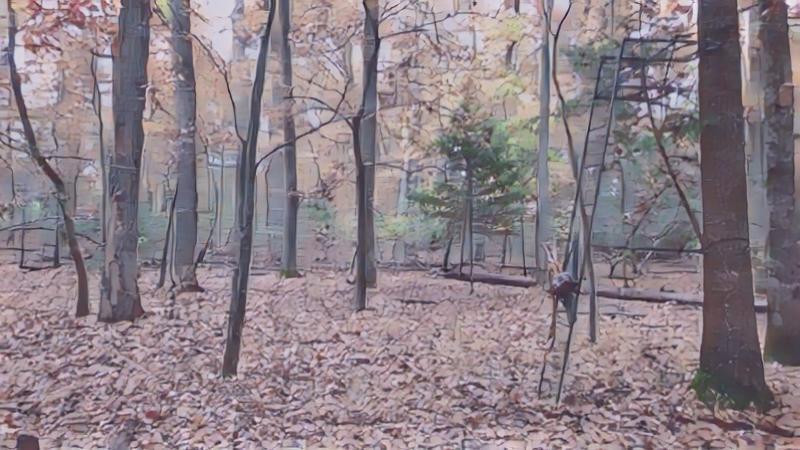
Why You Shouldn't Believe Everything You See on Hunting TV Shows
Hunting TV shows have become increasingly popular in recent years. While they can be entertaining, they may not always be an accurate representation of the hunting experience. It's important to be aware of the following:
- Most hunters do not have access to managed deer ranches like those shown on TV. These ranches often provide free hunting opportunities in exchange for the hunter's trophy, which may not accurately reflect the reality of hunting in the wild.
- Hunters often refer to smaller bucks as "cull bucks" or "management bucks" to make it socially acceptable to shoot them. This is not representative of the real hunting world.
- Viewers should be wary of the "services" that TV hunters claim to be providing for these ranches. It's important to remember that their presence may not actually bring in more business. While these shows may be entertaining, they are not necessarily educational or representative of what hunting is actually like.
It's crucial to be critical of what you see on TV, even if it's something you enjoy watching. Don't believe everything you see, and always remember that hunting in the real world is very different from what is depicted on hunting TV shows.
Effective Ways to Increase Your Average Antler Size
Culling bucks may not be the best way to improve the antler size of your herd. If you are planning to shoot a small deer, instead of feeling ashamed, take pride in it. However, if you are concerned about deer management and have been using culling to enhance the quality of your herd, consider focusing on ways to increase its nutrition, and you will see a significant improvement in their antler size.
One of the most effective ways is by increasing the availability of food and water for the deer population. Planting food plots and creating water sources are great ways to provide the needed nutrition. By doing it right, you can realistically increase your average antler size by 15 inches or more within a few years.
If you want to learn more about how to attract and accommodate bucks on a small property, see my article titled, “How to Attract and Hold Bucks on a Small Property”. I discuss in detail the necessary provisions for the deer to thrive, including food, water, and cover, as well as a few tips for bringing in more bucks.


